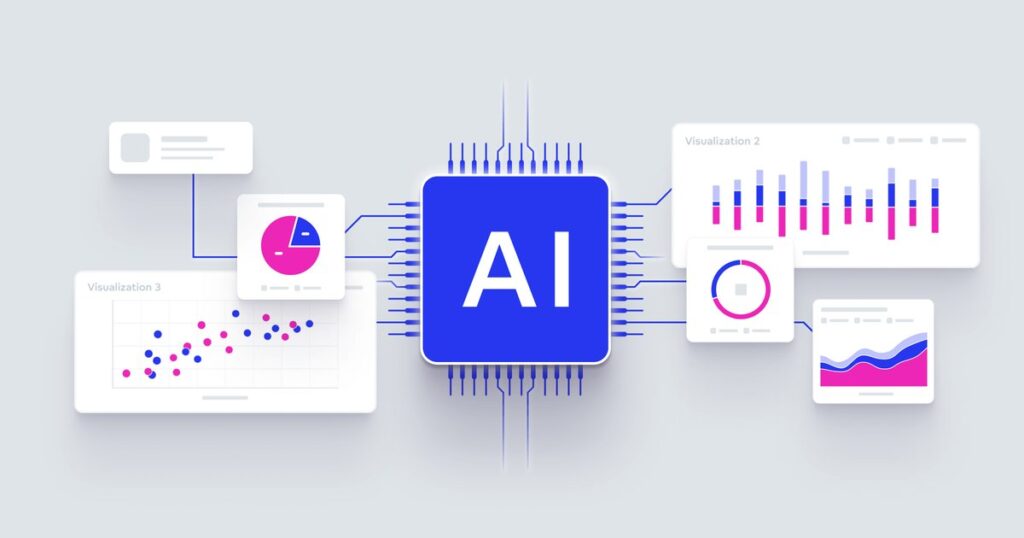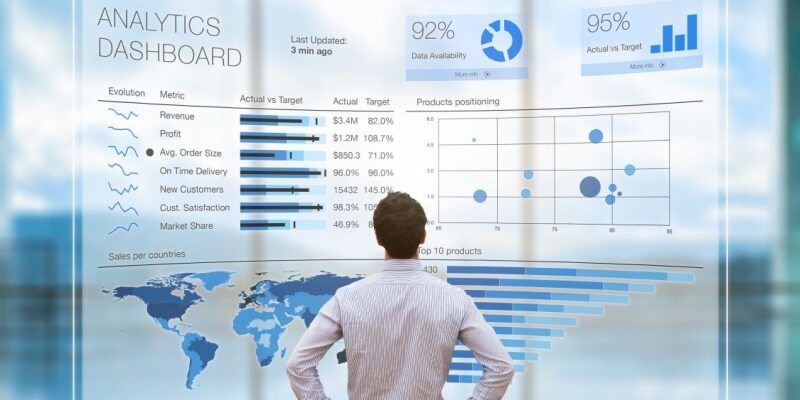Unlocking the Future
How Data Analytics, BI, and AI are Revolutionizing Business Insights

In today’s fast-paced business world, data is king. But raw data alone isn’t enough; it’s what you do with it that truly matters. This is where the powerful combination of Data Analytics, Business Intelligence (BI), and cutting-edge Artificial Intelligence (AI) comes into play, transforming how businesses understand their operations, predict the future, and identify critical opportunities.
For years, our ERP offerings have provided the backbone for your operational efficiency. Now, we’re taking it a step further, integrating advanced analytics and AI to unlock a deeper level of insight that was once the exclusive domain of data scientists.


The Foundation: Data Analytics & Business Intelligence
Think of Data Analytics as the microscope that helps you examine your past and present. It’s about collecting, processing, and interpreting vast amounts of information to reveal patterns, trends, and meaningful correlations. This is crucial for understanding what happened, why it happened, and what’s happening now.
Business Intelligence then takes these analytical insights and makes them accessible and actionable. Through intuitive dashboards and reports, BI tools translate complex data into clear, understandable visualizations, empowering decision-makers across all levels of your organization. It’s about providing the right information to the right people at the right time.
However, even with robust data analytics and BI, truly forward-looking insights and effortless data exploration often required specialized skills and significant time. This is where AI steps in as a game-changer.
The AI Advantage:
Democratizing Complex Insights
AI is not just a buzzword; it’s the engine that supercharges your data strategy, making sophisticated analytics accessible to everyone. By integrating AI into our data analytics and BI services, we’re bringing capabilities to the forefront that were once incredibly complex and time-consuming.
1. Natural Language Queries: Talk to Your Data
Imagine being able to ask your data a question in plain English and get an immediate, intelligent answer. That’s the power of Natural Language (NL) Queries driven by AI. Instead of navigating complex menus or requiring a data analyst to write a specific query, you can simply type or even speak: “What were our sales in Q3 last year?” or “Show me the top-performing products in the West region last month.”
This democratization of data access empowers every user to become an independent explorer, fostering a culture of data-driven decision-making throughout your organization.
2. Advanced Forecasting: See the Future with Confidence
Predicting future trends has always been a cornerstone of strategic planning. While traditional forecasting models required significant expertise and fine-tuning, AI-powered forecasting takes this to an entirely new level. Machine learning algorithms can analyze historical data, identify subtle patterns, account for external factors, and generate highly accurate predictions for sales, inventory, demand, and more.
This means you can anticipate market shifts, optimize resource allocation, and make proactive decisions with a much higher degree of confidence, avoiding costly surprises.
3. Anomaly Detection: Spotting the Needle in the Haystack
In vast datasets, identifying unusual patterns or outliers – anomalies – can be incredibly challenging yet crucial. These anomalies often signal critical events, such as fraudulent activities, operational failures, security breaches, or sudden shifts in customer behavior. Manually sifting through data for these deviations is like finding a needle in a haystack.
AI-driven anomaly detection continuously monitors your data, learning what “normal” looks like, and immediately flags any deviations that warrant attention. This proactive identification allows for rapid response, minimizing potential damage and maximizing operational integrity.
Making the Impossible, Possible: The True Democratization of Analytics
For decades, the capabilities we’ve just described—conversing with data, predicting the future with accuracy, and instantly spotting critical anomalies—were not just complex; they were exclusive. Achieving these insights required a formidable combination of resources that placed them firmly in the realm of corporate giants.
The Old Reality: An Exclusive Club
In the past, to even attempt this level of analysis, a company needed:
- Extensive, Niche Expertise: This meant hiring teams of data scientists with PhDs, statisticians, and machine learning engineers. These specialists, who command high salaries and are in short supply, were necessary to build, train, and maintain the complex models required for forecasting and anomaly detection.
- Highly Sophisticated Software: Generic BI tools were not enough. This work demanded expensive, specialized software platforms for statistical modeling and data processing, often requiring custom development and complex integrations that could take months or even years to implement.
- Massive Computational Power: Processing the sheer volume of data needed for accurate AI models required significant investment in on-premise servers or expensive cloud computing resources.
This reality created a significant competitive disadvantage. The largest corporations could afford to invest millions in these data science “ivory towers,” gaining predictive insights that allowed them to outmaneuver smaller competitors. For most businesses, these advanced analytics were simply an unattainable luxury.
The New Paradigm: AI as the Great Equalizer
Artificial Intelligence, when integrated thoughtfully into a business platform, shatters these barriers. It acts as the great equalizer, democratizing access to these once-exclusive capabilities.
Here’s how AI changes the game:
- It abstracts the complexity. For Natural Language Queries, the AI engine does the heavy lifting of translating a simple English question into a complex database query, analyzing the result, and presenting it back in an understandable format. You no longer need to be a database expert.
- It automates the expertise. For forecasting and anomaly detection, modern AI models can automatically test thousands of variables and algorithms in the background, selecting and fine-tuning the best approach for your specific data. The work that once took a data scientist weeks can now be done continuously and automatically.
- It optimizes the resources. By building these features directly into our service on top of your ERP, we manage the underlying complexity and computational load, delivering the power of advanced AI without requiring you to build and maintain a dedicated infrastructure.
This is the essence of democratization: transforming a highly specialized, resource-intensive process into an accessible, intuitive service.
Your Partner in Intelligent Growth
Harnessing this power isn’t about simply flipping a switch. It requires choosing the right partner—one who not only provides the technology but also understands your business context. A true partner integrates these powerful AI features seamlessly into the tools you already use daily, ensuring that the insights generated are relevant, actionable, and drive real-world value.
The integration of AI into our Data Analytics and BI services, built on the solid foundation of our ERP offering, represents a significant leap forward in how businesses can leverage their data. We’re committed to providing not just tools, but a complete service that guides you through this transformation.
With the right AI partner, complex analytics no longer need to be complicated. They can be democratized, empowering your entire organization to gain deeper insights, make smarter decisions, and truly unlock the future of your business.
